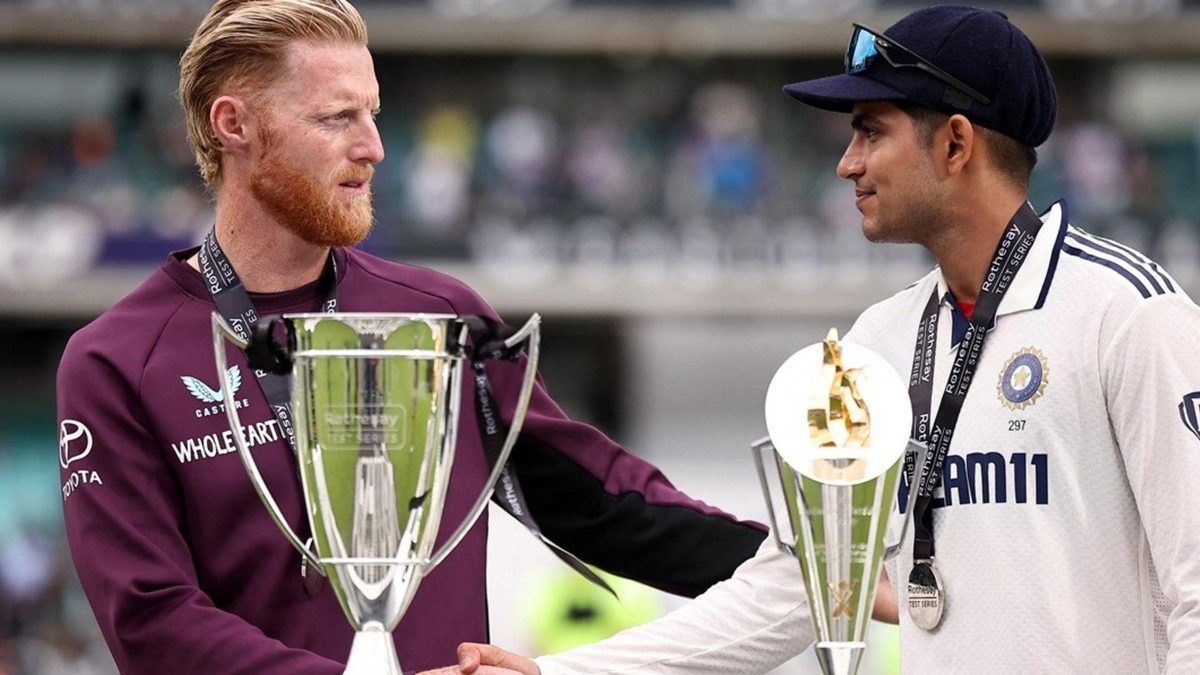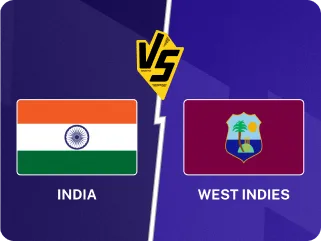
India’s magnificence in the dying stages at The Oval helped them square the series in England, but that does not change the fact that they will return without winning a series they should have won.
Ahead of the series, we had discussed in these pages why India were slight favourites going into the Anderson-Tendulkar Trophy. This, despite the triple retirements of R Ashwin, Rohit Sharma, and Virat Kohli, and the unavailabilities for Mohammed Shami and, for two Tests, Jasprit Bumrah.
However, since “English conditions” were not what they used to be in the past. Over this period, batting had become significantly easier in the nation. The inexperienced Indian batting unit was not expected to cave in.
England’s attack had been inexperienced as well. This was going to be their first home series against a major team in the same conditions since James Anderson and Stuart Broad retired. Chris Woakes was their senior bowler. Jofra Archer’s availability was uncertain. Mark Wood was unavailable. It was not known before the series how much Ben Stokes would bowl.
This was not the attack that had won four series across 2022 and 2024, and had kept Australia at bay in 2023.
The lost opportunities
India feasted on England’s right-arm-pace-dependent attack at Headingley – not once but twice. They made five hundreds in the Test (two of them by Rishabh Pant). True, none of these was a 150, but it was still a national record. They were 430-3 in the first innings and, after securing a tiny lead, 333-4 in the second. Bumrah prised out a five-wicket haul in the first innings. Teams are not supposed to lose after that.
But India did, by getting bowled out for 471 and 364 (the two collapses were worth 13 wickets for 72 runs), by dropping at least as many catches as they held, by picking Shardul Thakur and not using him at all, by looking clueless as Zak Crawley and Ben Duckett piled on runs in the chase. They did not seem to have a Plan B when Bumrah failed to strike with the new ball.
Great teams can get outplayed, but England did not quite outbat or outbowl India at Headingley: they outcaught them. While lack of exposure in the conditions can be cited as a reason for ordinary shows with the bat or ball, the same allowances cannot extend to fielding, the one department where the best teams are expected to compete irrespective of circumstances. The tail-enders did not try to survive either, not even with Ravindra Jadeja around in the second innings.
With no Bumrah available for Edgbaston – a venue where they had never won before – India’s tour seemed to be doomed. Instead of compensating for their weakened bowling, they weakened it even more by picking three all-rounders to go with three specialist seamers. It had backfired in Australia, but did not here: if anything, they had a near-perfect Test match.
It might have gone awry. India still lost four for 29 in the first innings, and three bowlers shared only three wickets between them. But aided by the extra batter, Shubman Gill drowned England under the weight of runs, and Mohammed Siraj and Akash Deep struck five times inside the first 22 overs in each innings. Whatever England did from there was going to be inadequate.
At Lord’s, England were bolstered by Jofra Archer, and scored at a pace slower than usual. Bumrah still struck five times, but England recovered from 271-7 to 387. Then, in control at 248-3, India slid to 376-6 and then 387. They still reached 41-1 in pursuit of 193, but finished the day on 58-4 and, despite Jadeja’s pragmatic approach, lost by 22 runs.
The 2-1 lead that was England’s could have been India’s at this point. Ravi Shastri felt India could even have been 3-0 up. One could see his point: India had thrown away points of advantage in two of the three Tests and found themselves trailing for no fault but theirs.
Anshul Kamboj, who had flown out just before the Old Trafford Test, played straight away. Once India went through their usual routine of a collapse (five for 44 this time), Kamboj – who got the new ball – was strangely insipid, bowling significantly below his usual pace, something that confused even bowling coach Morne Morkel.
Kamboj was not the only Indian seamer who bowled below pace at Old Trafford. Already 1-2 down in the series, India decided to use up Bumrah’s pre-determined “quota” of three Tests on the tour. Rarely hitting 140kph, Bumrah conceded a bowler’s century for the first time in Test cricket. With two bowlers at below par and Thakur curiously underbowled yet again, England batted India out of the Test but – despite Pant’s injury – could not secure a win.
Had they not made the unforced errors at Headingley at Lord’s, the draw at Old Trafford should have helped India retain the rubber. Instead, they took the field at The Oval, trying to catch up. They began with the now-customary collapse (four for six). All seemed lost when England came within a hundred runs with nine wickets in hand – but this time the tables were turned.
First, England collapsed as the Indian speedsters – they could have done with a fourth member – produced a performance for the ages. Then catches went down, but this time by England. Akash, part of multiple collapses, got a fifty. Washington then added 39 for the last wicket with Prasidh.
For a while, it seemed India had overcome their curse, but now Siraj put down Harry Brook. All seemed lost when England came within 75 runs of winning with seven wickets in hand, but a miraculous performance from Siraj, aided by Prasidh, helped seal one of the greatest wins in Indian history. The joy buried India’s inability to convert winning positions at Headingley and Lord’s to results.
What if India had held even half the catches they grassed at Headingley? What if their tail had hung around Jadeja? What if KL Rahul’s hundred could wait until after the lunch break at Lord’s? What if, with the knowledge that most England seamers have been ineffective after the 30th over, India had eliminated all risks while chasing a small target in the fourth innings? The series might not even have been alive at Old Trafford.
It will take a while for the dust to settle on India’s astonishing series-levelling win. The hyper-truncated highlights packages will be viewed in a loop for days. Clips of the winning moment will continue to be shared, as will be the quotes and dressing-room stories.
But over time, the moment will fade away from the news cycles. A year will pass, then another. The Oval heist will seem just as far away as the Headingley debacle or the Lord’s heartbreak.
It is perhaps then that it will dawn upon the Indian cricket fraternity that the summer of 2025 was when India had the chance to win a series in England after 18 years, but failed to. It is perhaps then that the lost opportunities will begin to hurt.








